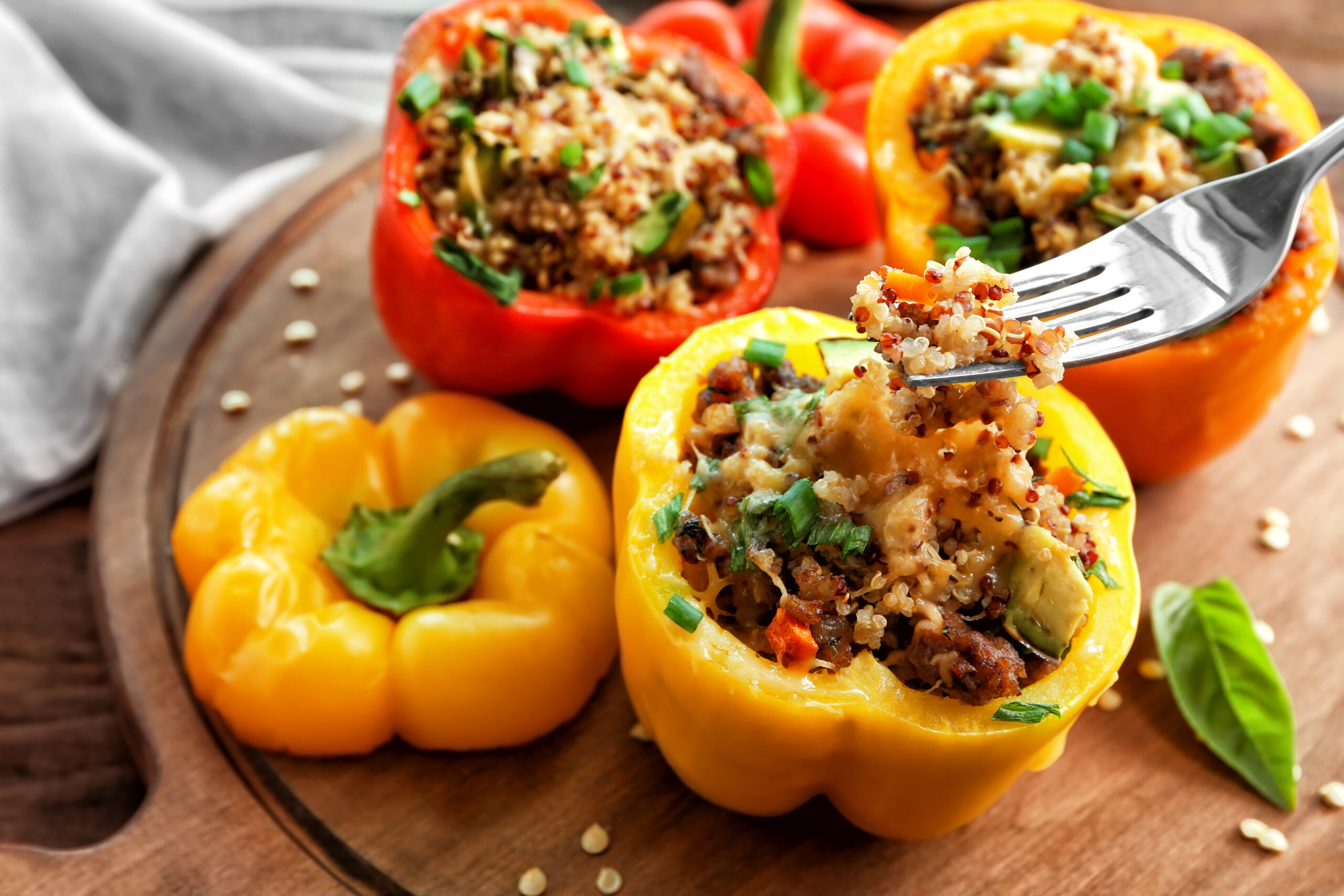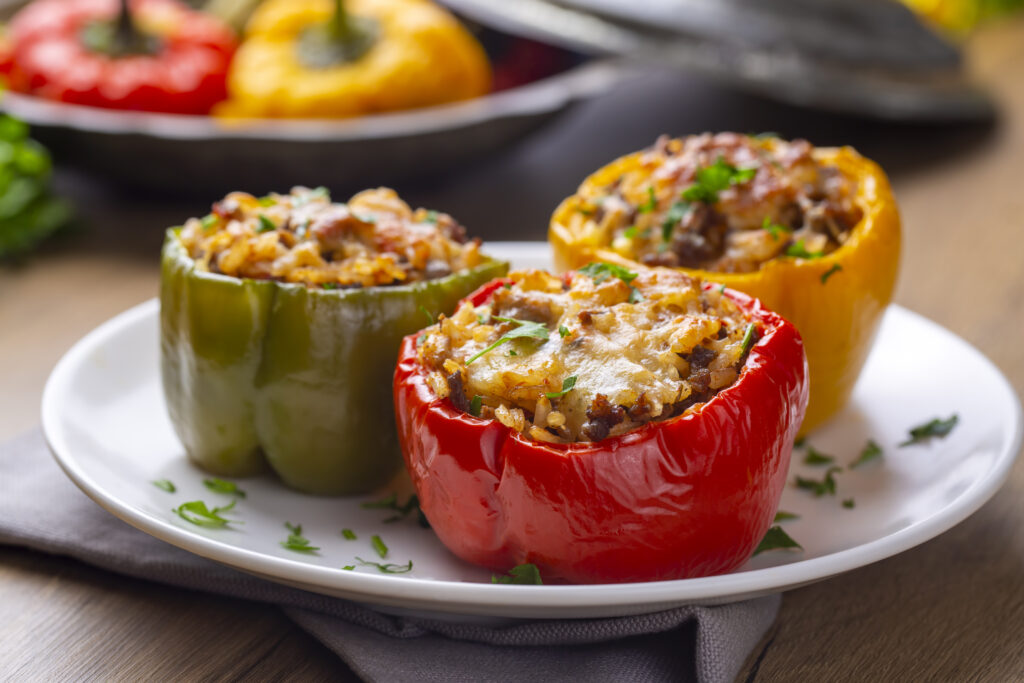Mad Island Console Commands & Cheats (2025 Master Guide)


Stuffed bell peppers are a versatile and delicious dish that can be tailored to suit a variety of tastes and dietary preferences. These colorful vegetables serve as the perfect vessel for a wide range of fillings, from hearty meats to wholesome grains and vibrant vegetables. Whether you’re a novice in the kitchen or an experienced home cook, stuffed peppers offer a creative and satisfying meal option. In this article, we will explore the essentials of making perfect stuffed bell peppers, including the best ingredients, cooking methods, and tips for enhancing flavor and presentation.
Before diving into the world of stuffed bell peppers, it’s important to have the right tools on hand. A sturdy baking dish is essential for holding the peppers upright during cooking, ensuring even heat distribution. A sharp knife is crucial for slicing the tops off the peppers and dicing any additional ingredients. A large skillet or saucepan will be necessary for preparing the filling, while a spoon or small scoop makes stuffing the peppers a breeze. Finally, aluminum foil can be helpful for covering the peppers during baking to prevent them from drying out.

The foundation of any stuffed bell pepper recipe is, of course, the peppers themselves. When selecting bell peppers, look for ones that are firm and have smooth, unblemished skin. The peppers should be uniform in size to ensure even cooking. Red, yellow, and orange peppers tend to be sweeter and milder, making them great for stuffing, while green peppers offer a slightly more robust flavor. For a visually appealing dish, consider using a mix of colors.
When it comes to choosing a protein for your stuffed peppers, ground beef and Italian sausage are both popular options. Ground beef offers a classic flavor and is widely accessible, making it a staple for many traditional recipes. On the other hand, Italian sausage brings a distinct flavor profile with its blend of herbs and spices, adding depth to the dish. Both proteins can be used interchangeably, but consider the flavor profile you wish to achieve when making your selection. Mixing the two can also provide a balance of taste and texture.
For those looking to explore beyond traditional meats, there are several alternative proteins that work well in stuffed bell peppers. Ground turkey or chicken offer a leaner option while maintaining a hearty texture. For a plant-based approach, consider using lentils, chickpeas, or black beans, which provide protein and fiber while absorbing the flavors of spices and sauces. Tofu or tempeh can also be used for a vegetarian or vegan-friendly filling, offering a neutral base that pairs well with a variety of seasonings.
Vegetarian stuffed bell peppers can be just as satisfying as their meat-filled counterparts. A combination of grains, legumes, and vegetables creates a nourishing and flavorful filling. Consider using quinoa or rice as a base, adding black beans or kidney beans for protein. Diced tomatoes, corn, and spinach can enhance the filling with color and nutrition. For added richness, incorporate cheese such as feta or mozzarella, or use nutritional yeast for a vegan alternative.
Grains play a crucial role in stuffing bell peppers, providing substance and texture. Rice is a traditional choice, with both white and brown varieties offering their own unique flavors and nutritional benefits. Quinoa is a nutrient-dense option, offering a complete protein source that pairs well with a variety of fillings. Other grains such as farro, barley, or couscous can also be used, each bringing their own distinct taste and texture to the dish. Experiment with different grains to find your preferred combination.
Spices and sauces are key to elevating the flavor of stuffed bell peppers. Common spices include cumin, paprika, garlic powder, and oregano, which can be adjusted to suit your taste preferences. Fresh herbs like parsley, cilantro, or basil add a burst of freshness. Sauces such as marinara, salsa, or a simple tomato sauce can be mixed into the filling or drizzled on top before baking. For a creamy touch, consider adding a dollop of sour cream or a sprinkle of grated cheese as a finishing touch.
Toppings are an excellent way to add texture and visual appeal to your stuffed peppers. Shredded cheese is a classic choice, melting beautifully over the peppers as they bake. Crispy breadcrumbs or crushed tortilla chips can add a satisfying crunch. For a burst of freshness, garnish with chopped herbs or a squeeze of lime juice. Sliced avocado or a dollop of guacamole can also provide a creamy contrast to the savory filling.
Stuffed bell peppers can be cooked using various methods, each offering its own advantages. Baking in the oven is a popular choice, allowing the peppers to cook evenly and develop a slightly crispy exterior. Preheat the oven to 375°F (190°C) and bake the peppers for 30 to 40 minutes, covering them with foil for the first half of the cooking time to prevent drying. Alternatively, a slow cooker can be used for a hands-off approach. Cook the peppers on low for 4 to 6 hours, or on high for 2 to 3 hours, until they are tender. This method is ideal for busy days when you want to come home to a ready meal.
Preparing stuffed bell peppers can be time-consuming, but with a few tips, you can streamline the process. Consider making the filling in advance and storing it in the refrigerator for up to two days, or freeze it for longer storage. Peppers can be prepped by slicing off the tops and removing the seeds, then kept in an airtight container in the fridge until ready to use. If using grains, cook them in bulk and store portions in the freezer for quick access. Utilizing pre-cooked proteins or canned beans can also save time without sacrificing flavor.
Even experienced cooks can encounter challenges when making stuffed bell peppers. If your peppers are undercooked, try increasing the cooking time or precooking them in boiling water for a few minutes before stuffing. If the filling is too dry, consider adding a bit more sauce or broth to maintain moisture. For peppers that collapse during baking, ensure they are packed tightly in the baking dish or use smaller peppers that are more stable. Adjusting these elements can help achieve the perfect stuffed pepper every time.
Stuffed bell peppers are a complete meal on their own, but they can also be paired with complementary sides for a well-rounded dining experience. A simple green salad with a light vinaigrette can provide a refreshing contrast. Garlic bread or a crusty baguette is perfect for soaking up any extra sauce. For a heartier meal, serve the peppers alongside roasted vegetables or a creamy potato dish. With these pairings, stuffed peppers can be enjoyed as a versatile and satisfying main course.
Leftover stuffed bell peppers can be stored in the refrigerator for up to four days. Place them in an airtight container to maintain freshness. To reheat, place the peppers in a baking dish, cover with foil, and bake in a preheated oven at 350°F (175°C) for about 15 to 20 minutes, or until heated through. Alternatively, they can be microwaved on medium power for a few minutes, though this may result in a softer texture. For longer storage, stuffed peppers can be frozen for up to three months. Thaw them overnight in the refrigerator before reheating for best results.